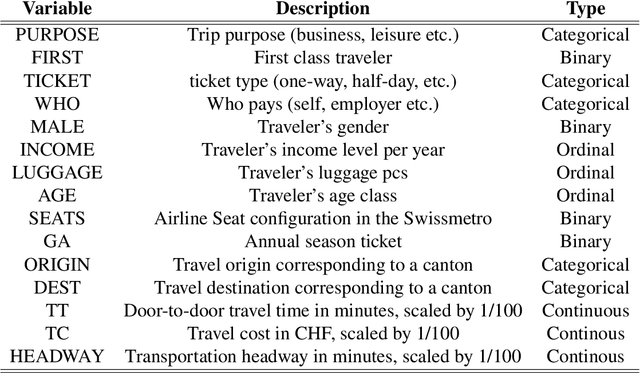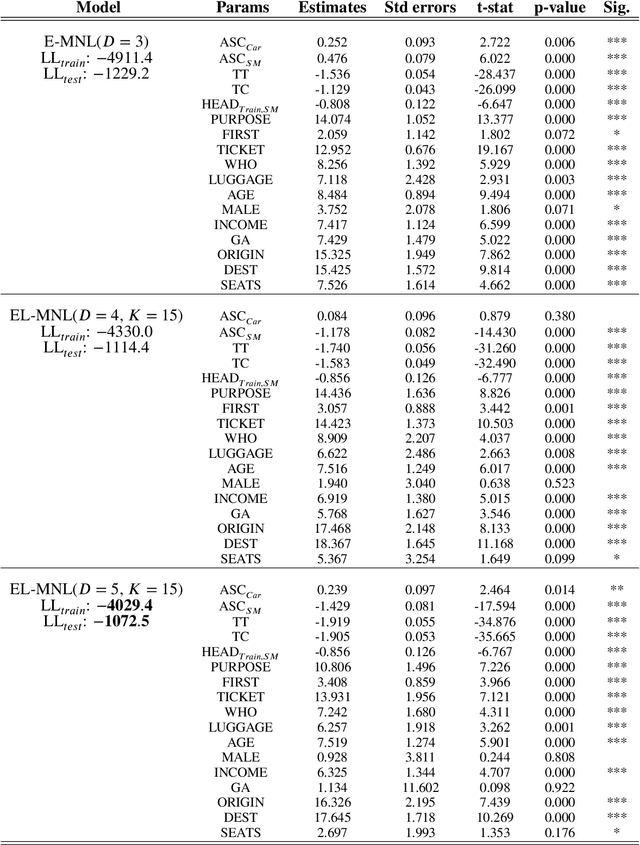Ioanna Arkoudi
DTU Management, Technical University of Denmark
Attitudes and Latent Class Choice Models using Machine learning
Feb 20, 2023Abstract:Latent Class Choice Models (LCCM) are extensions of discrete choice models (DCMs) that capture unobserved heterogeneity in the choice process by segmenting the population based on the assumption of preference similarities. We present a method of efficiently incorporating attitudinal indicators in the specification of LCCM, by introducing Artificial Neural Networks (ANN) to formulate latent variables constructs. This formulation overcomes structural equations in its capability of exploring the relationship between the attitudinal indicators and the decision choice, given the Machine Learning (ML) flexibility and power in capturing unobserved and complex behavioural features, such as attitudes and beliefs. All of this while still maintaining the consistency of the theoretical assumptions presented in the Generalized Random Utility model and the interpretability of the estimated parameters. We test our proposed framework for estimating a Car-Sharing (CS) service subscription choice with stated preference data from Copenhagen, Denmark. The results show that our proposed approach provides a complete and realistic segmentation, which helps design better policies.
Combining Discrete Choice Models and Neural Networks through Embeddings: Formulation, Interpretability and Performance
Sep 30, 2021



Abstract:This study proposes a novel approach that combines theory and data-driven choice models using Artificial Neural Networks (ANNs). In particular, we use continuous vector representations, called embeddings, for encoding categorical or discrete explanatory variables with a special focus on interpretability and model transparency. Although embedding representations within the logit framework have been conceptualized by Pereira (2019), their dimensions do not have an absolute definitive meaning, hence offering limited behavioral insights in this earlier work. The novelty of our work lies in enforcing interpretability to the embedding vectors by formally associating each of their dimensions to a choice alternative. Thus, our approach brings benefits much beyond a simple parsimonious representation improvement over dummy encoding, as it provides behaviorally meaningful outputs that can be used in travel demand analysis and policy decisions. Additionally, in contrast to previously suggested ANN-based Discrete Choice Models (DCMs) that either sacrifice interpretability for performance or are only partially interpretable, our models preserve interpretability of the utility coefficients for all the input variables despite being based on ANN principles. The proposed models were tested on two real world datasets and evaluated against benchmark and baseline models that use dummy-encoding. The results of the experiments indicate that our models deliver state-of-the-art predictive performance, outperforming existing ANN-based models while drastically reducing the number of required network parameters.
 Add to Chrome
Add to Chrome Add to Firefox
Add to Firefox Add to Edge
Add to Edge